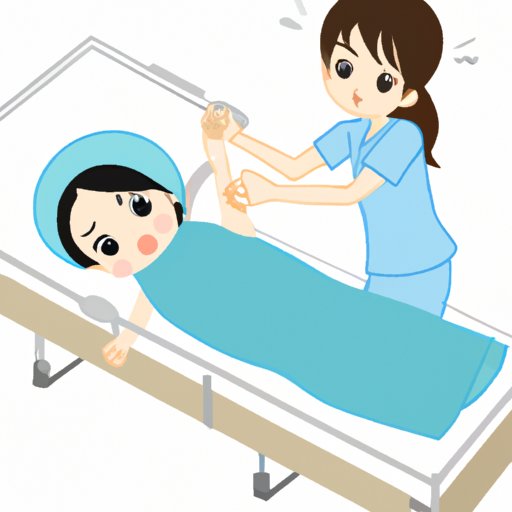
Introduction
Expectant mothers face many decisions during labor and delivery, including whether or not to get an epidural. However, what happens when a mother is already at 7cm dilation and wants to get an epidural? Is it safe for both the mother and baby? In this article, we will explore the safety concerns and factors to consider when making this decision.
The Truth About Getting an Epidural at 7cm: Is it Safe?
The main safety concern when getting an epidural at 7cm is the risk of lowering the mother’s blood pressure, which can lead to fetal distress. However, studies show that the risk is not significant when epidurals are administered by a trained anesthesiologist. Additionally, receiving an epidural at 7cm does not seem to prolong labor or increase the likelihood of a cesarean delivery. It’s important to weigh the risks and benefits for both the mother and baby. For example, managing pain can lower stress hormones and help the mother relax, leading to a smoother delivery and better outcomes for both the mother and baby.
Everything You Need to Know About Epidurals: A Guide for Expectant Mothers
An epidural is a form of regional anesthesia that blocks pain signals from the lower half of the body. It is administered through a catheter in the lower back and can provide varying degrees of pain relief. There are different types of epidurals, including a walking epidural which allows the mother to be more mobile during labor. However, epidurals do come with risks such as lowering blood pressure, causing nausea or itching, and difficulties with pushing during delivery. If you are considering getting an epidural at 7cm, talk to your healthcare provider to learn more about the options available.
Birth Plan Options: Choosing the Right Pain Management for You
There are various pain management options available for expectant mothers, including natural methods such as breathing and relaxation techniques, hydrotherapy, and medical options such as nitrous oxide, intravenous medication, and epidurals. It’s essential to consider the best options for different stages of labor. For example, nitrous oxide may be helpful for managing early labor pain, while an epidural may be best for advanced labor. Discuss the options with your healthcare provider, and consider the risks and benefits of each method.
Preparing for a Positive Birth Experience: Tips and Tricks for Expectant Mothers
Preparing for labor and delivery is essential for a positive birth experience. One way to prepare is by taking childbirth education, prenatal yoga, or meditation classes. Additionally, consider hiring a doula or a childbirth coach for additional support during labor. If you are considering getting an epidural at 7cm, talk to your healthcare provider early in pregnancy to discuss your options and create a birth plan that aligns with your preferences.
From 1cm to Delivery: What to Expect During Labor and Delivery
The stages of labor include early labor, active labor, transition, and delivery. Epidurals are typically given during active labor, which is when contractions are strong and close together. The risks and benefits of epidurals should be considered during each stage of labor and delivery. If you decide to get an epidural at 7cm, you can expect to feel immediate relief from pain. It’s important to remain still during the administration of the epidural, and once administered, you may be restricted to bedrest and continuous monitoring of your blood pressure and baby’s heart rate.
Conclusion
Getting an epidural at 7cm is relatively safe and can provide pain relief that can lead to a smoother delivery and better outcomes for both mother and baby. However, it’s essential to weigh the risks and benefits and discuss options with your healthcare provider. Remember that each labor and delivery is unique, and there’s no one-size-fits-all approach to pain management. Planning and preparation can help make the process smoother and more positive.




